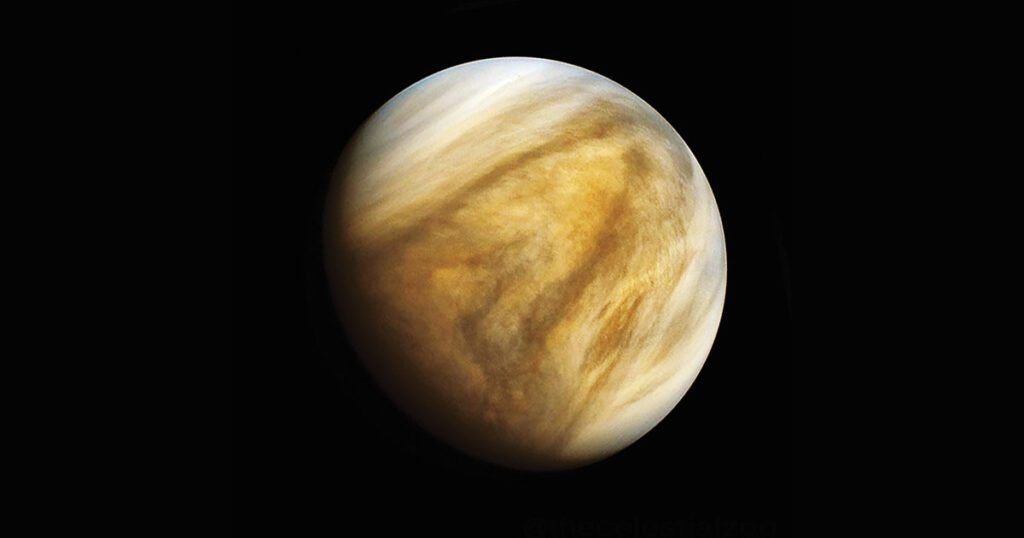Venus is known as the hottest planet in our solar system. It is also Earth’s twin because of its similarity in size. But despite the similarities they share, the two planets are y different. One distinct difference seen in Venus when compared to Earth is its strange passing of time.
Due to Venus spinning at a very slow rate, years pass by quicker than its days. One day in Venus is equivalent to 243 Earthen days. Whereas a Venusian year lasts for 225 Earthen days.
An Introduction to Venus
Known as the second planet closest to the sun and the Earth’s neighbor. Venus rotates around the sun at a 108 million-kilometer distance. The planet is often referred to as the twin of the Earth because of its nearly identical density and size. Although similar in their general dimensions, Earth and Venus are massively different from each other.
Unlike planet Earth, Venus has an atmosphere packed with carbon dioxide and yellow-hued sulfuric acid clouds, confining heat that consequentially induces a runaway greenhouse effect. This makes Venus the hottest planet in the solar system, regardless of its distance to the sun.
Equivalent to 900 degrees Fahrenheit, the surface temperatures in Venus is so hot that it’s capable of melting lead. Additionally, unlike Earth’s vast colors found in its land and waters, the surface of Venus is coated in a rusty shade, occupying thousands of massive volcanoes and mountains. Experts believe that some mountains continue to be active.
Venus also contains an intense air pressure, more than 90 times the air pressure found on Earth. The surface air pressure on Venus is similar to the air pressure one can experience when swimming in Earthen waters a mile below its surface.
In December 1962, Venus became the first planet to be ventured on a spacecraft. The American NASA Mariner 2 arrived at Venus and observed the characteristics of its atmosphere. Many interplanetary missions set by different space agencies have now made their way to Venus, including the Magellan spacecraft of NASA that surveyed Venus’ surface with radar.
Because of the overwhelming heat and pressure surrounding Venus’ surface, the spacecraft that have managed to land on its grounds didn’t survive long, including the Soviet spacecraft that made the most successful landings on the planet. (Source: NASA Science)
The Otherworldly Venusian Time
The most surreal feature in Venus is the way time passes. Compared to most planets in our solar system, the direction of Venus’ rotation is clockwise, making the sun rise in the west and set in the east. Not only that, but its rotation is exceedingly slow when compared to the Earth’s as it requires 243 Earthen days to spin once.
Contrarily, Venus only needs 225 Earthen days to finish its revolution around the sun because of its close distance. With that said, one day on Venus is longer than one year on Venus.
Dissimilar to Earth, one cannot experience a sunrise and a sunset daily on Venus as it needs 117 Earthen days for the sun to rise once on the planet. A year on Venus only experiences the sunrise twice, even if it remains to be the same day. (Source: NASA Science)
